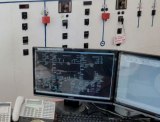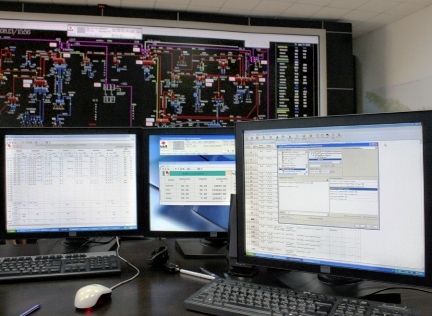Operational dispatch control of the power system — tasks, characteristics of the organization of the process
 The energy system is a unified network consisting of sources of electrical energy — power plants, electrical networks, as well as substations that convert and distribute generated electrical energy. To manage all processes of production, transmission and distribution of electrical energy, there is an operational dispatch control system.
The energy system is a unified network consisting of sources of electrical energy — power plants, electrical networks, as well as substations that convert and distribute generated electrical energy. To manage all processes of production, transmission and distribution of electrical energy, there is an operational dispatch control system.
The energy system of the country may include several enterprises with different forms of ownership. Each of the electricity companies has a separate operational dispatch office.
All services of individual enterprises are managed by a central dispatch system... Depending on the size of the power system, the central dispatch system can be divided into separate systems for the regions of the country.
The electrical systems of neighboring countries can be connected for parallel synchronous operation.A Central Dispatch System (CDS) performs operational and dispatch control of interstate electrical grids through which energy flows between the energy systems of neighboring states.
Tasks of operational-dispatching control of the power system:
-
maintaining a balance between the amount of power produced and consumed in the power system;
-
reliability of power supply to power supply enterprises from highway networks 220-750 kV;
-
synchronous operation of power plants in the power system;
-
synchronous functioning of the country's energy system with the energy systems of neighboring countries, with which there is a connection through interstate power lines.
Based on the above, it follows that the system for operational dispatch management of the electricity system provides key tasks in the electricity system, the implementation of which depends on the energy security of the country.
Features of the organization of the process of operational dispatch control of the electric power system
Organization of the operational dispatch control (ODU) process in the energy sector, it is carried out in such a way as to ensure the distribution of various functions at several levels. Moreover, each level is subordinate to the higher one.
For example, the initial level is the operational-technical personnel who directly perform operations with equipment at various points of the power system, subordinate to the higher operational personnel - the duty dispatcher of the power supply division to which an installation is assigned. The duty dispatcher of the unit, in turn, is subordinate to the dispatching office of the enterprise, etc.to the country's central dispatch system.

The power system management process is organized in such a way as to provide continuous monitoring and control of all components of the interconnected power system.
In order to ensure normal operating conditions both for individual sections of the power system and for the power system as a whole, special modes (schemes) are developed for each facility, which must be provided depending on the mode of operation of a certain section of the electrical network (normal, repair, emergency modes).
To ensure the performance of the main tasks of the ODU in the power system, in addition to operational control, there is such a concept as operational management... All operations with equipment in one or another section of the power system are carried out under the command of the senior operational personnel — that is operational management process.
Work with equipment in one way or another affects the work of other objects of the power system (change in consumed or generated energy, reduction of power supply reliability, change in voltage values). Therefore, such operations must be coordinated in advance, that is, they must be carried out with the permission of the dispatcher who performs the operational maintenance of these objects.
That is, the dispatcher is responsible for all equipment, sections of the electrical network, the mode of operation of which may change as a result of operations on the equipment of neighboring sites.
For example, a line connects two substations A and B, while substation B receives power from A.The disconnection of the line from substation A is carried out by operating personnel under the command of the dispatcher of that substation. But the suspension of this line should be done only with the agreement of the dispatcher of substation B, since this line is under his operational control.
Therefore, with the help of two main categories — operational control and operational support, the organization of the operational dispatch control of the power system and its individual sections is carried out.
To organize the ODE process, instructions, instructions and various documentation are developed and agreed for each individual unit in accordance with the level to which this or that operational service belongs. Each level of the ODE system has its own individual list of required documentation.
Also read on this topic: SCADA systems in electrical installations
